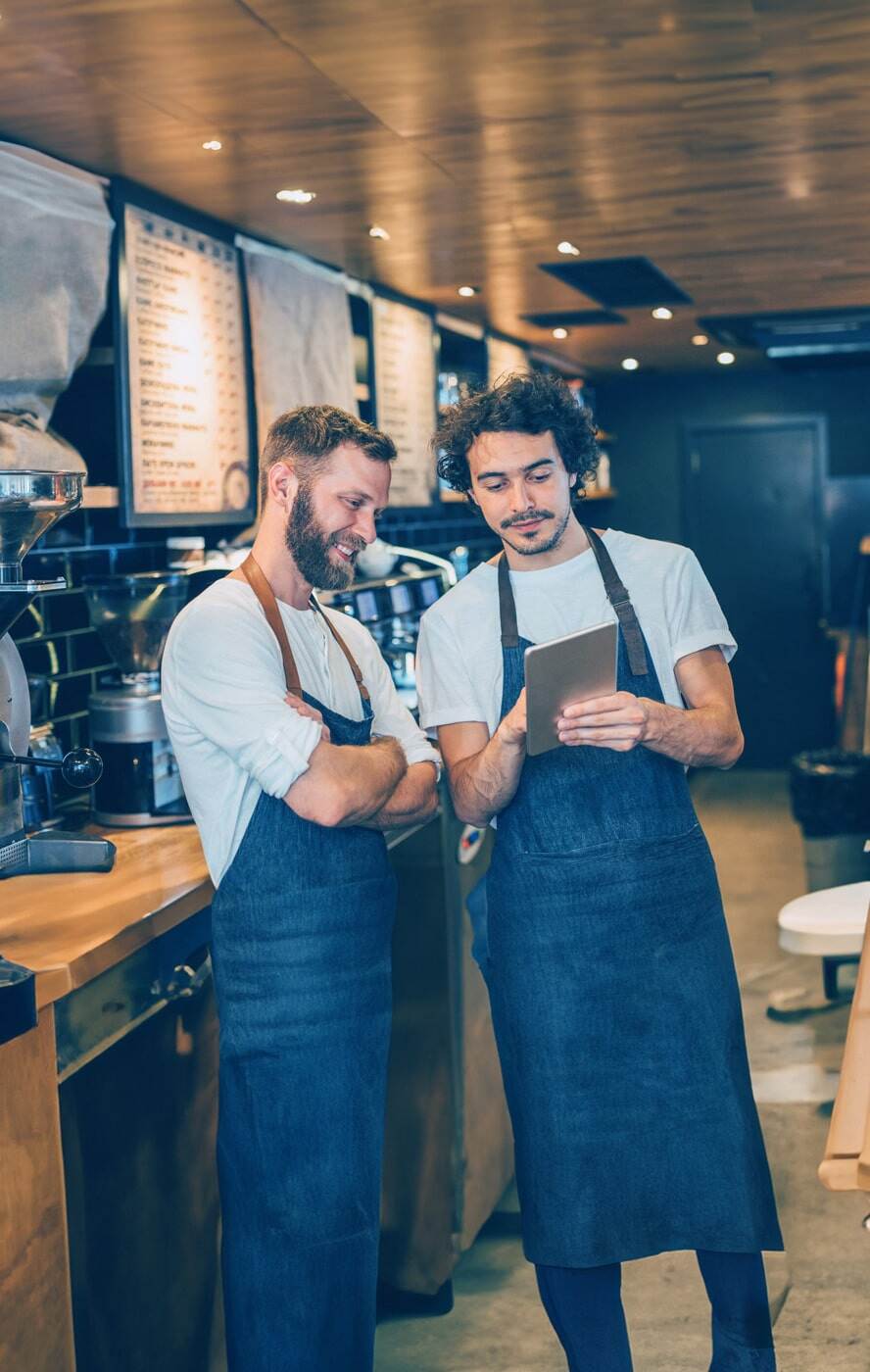In restaurants, take-aways and catering, almost half of the food is thrown away - a serious problem. All the more so because in recent years there has been a trend towards take-away, delivery and eating out. So food waste by the catering industry is on the rise. What are actually the causes of food waste? What can restaurants do about it? What are the advantages and disadvantages of the solutions?
Eating out: The Fall of Man?
According to studies by the Federal Environmental Offices in Germany and Switzerland, the extent of food waste is shocking, and this is especially true for eating out. In Switzerland, 37 per cent of food is not used across the entire value chain - production, trade, private households and out-of-home catering. In absolute figures: 330 kg of food waste per capita and year. In the catering industry, as much as 44 per cent ends up in the bin instead of in the belly. And it is no different in the UK. What is the reason for this?
The reasons for food losses in the catering industry are manifold and range from the high standards - what is still edible or saleable within the concept of the restaurant, what effort and waste for culinary experiences is justified -, to the legal regulations on food hygiene and freshness, e.g. best-before date, to deviation and planning and purchasing for capacity utilisation in the restaurant or demand.
And finally: Is what was ordered or served also consumed? Because guests often order more than they actually eat. That leaves traces, more than necessary.
Why avoid food waste: the ecological footprint
Three aspects are important for the ecological footprint through nutrition: First, what is produced and consumed in the first place. It is well known that meeting one's nutritional needs with meat consumes more resources in the production process than eating cereals or vegetables.
Secondly, in what form is the respective food produced, provided and consumed at all? Is the food driven far back and forth, refrigerated or packaged?
And finally, to what extent is what is produced, traded, processed used at all. Food waste, which is what this is mainly about.
The consumption in the production
Every carrot that is harvested and traded not only leaves a hole in the ground, but also a so-called ecological footprint. The production costs energy, the packaging, the transport, the cooling, the preparation, even the disposal.
Food waste is not only unused energy: the carrot is not only not consumed and therefore does not nourish. The carrot itself consumes energy.
Avoiding food waste thus saves energy on the one hand, because less has to be produced. On the other hand, less energy goes to waste. If we produce what is actually consumed, then the consumption of resources and the effort along the entire value chain - which today is also a value waste chain - would be lower.
Water
Water is not only needed for irrigating the fields and for drinking, but in the catering industry also for cleaning food, hands, utensils, kitchen and storage areas. So water is consumed in produ tion and processing. And if food is thrown away, then in a sense water is thrown away with it, too.
CO2
It is no different with CO2. Production, transport, cooling and storage consume CO2. If they are unnecessary because the product is ultimately not used, then CO2 emissions are too. If, as in Switzerland, 44 per cent of food in the catering industry ends up in the waste, then this also means that 44 per cent fewer lorry journeys would be necessary, or at least smaller vehicles and thus also lower energy consumption, meaning: less CO2 being produced.
Time and Ways
Seasonal and regional, when both come together: brutally local. The consistent implementation is not easy: olive oil is just as unavailable in most places as fish from the sea. Seasonal protects nature, because the plant grows without massive resource consumption such as heat foil, heating, heavy irrigation.
Regional is ecologically highly valuable because long distances can be avoided, i.e. high energy consumption during transport.
But be careful: what is harvested seasonally and regionally, such as apples in summer in Germany, Austria, Switzerland or the UK, is only reliably preferable to non-regional products if they are consumed immediately and not stored for a long time. For example, cooling apples for months consumes more energy than transporting fresh apples from distant countries. And if the long-chilled apple ends up in the rubbish: Waste.
Packaging
Cooling, transport, and then packaging. But not all packaging is necessary. And not everything that is packaged is actually used. Small packages for sauces or plastic cutlery, napkins or containers for home delivery are just a few examples of packaging that is often used only once or not at all. Anyone who has ever had a whole round of meals delivered to their home knows how much rubbish is produced by just a few people during a delivery meal. And often the contents fly away with the packaging: everyone knows the plastic soy sauce fish.
Home delivery generates more waste than cooking at home on the one hand and eating out at a restaurant on the other. Home delivery is also one of the driving reasons why private households accumulated 20% more waste during the pandemic.
Reduce food waste: Saving without restriction
All the examples and causes for the often unnecessary consumption of resources are exactly the places where we can start to avoid (food) waste.
We eat and drink, we have to do that, that's the way it is. It doesn't work without consumption. And "Then don't eat and drink so much" quickly leads to totalitarianism. Should we even move less, i.e. consume fewer calories and thus also less food or resources? However, a lot is already gained if we only really use what is actually produced: Consumption: Yes. Waste: No!
It simply bears repeating: Overall, 37 percent of the food produced, traded, bought and prepared goes unused. In gastronomy, the waste is as high as 44 percent. And the same applies to all other resources. It will not be possible to do completely without waste. But the savings potential is huge. And without having to sacrifice enjoyment or comfort.
How food waste can be reduced in the catering industry
Well-designed menus
The risk of food waste can already be minimised when compiling the menu. The more heterogeneous and comprehensive the menu, the more likely it is that ingredients and products that are only used in one dish will spoil instead of being consumed.
So often less is more. It's better to have a smaller menu that changes more frequently, which also allows for seasonal cuisine. And that is not a disadvantage. Because really seasonal cuisine is very popular. Strawberries, asparagus - how happy are the guests when it is really season, when the products are fresh, from close by and at their best.
Perfect cut
How much crayfish? How much cress? Of course, you can't plan every day down to the last mint leaf. And you can't reproduce crayfish à la minute if there are too few, or release them back into the wild if there are too many.
Standard today are reservation systems with measures against no-shows (most important when it comes to group reservations). The occupancy rate is therefore known. Only if the restaurant is not fully booked, a variable share is added. As a rule, the general demand, how many dishes are sold, can be estimated well. At the level of individual dishes, however, the uncertainty is considerably greater. So more dishes than necessary are planned so that everything is always available. And that's where the avoidable food waste comes from.
Guest data is another step towards a better assessment of demand. If the preferences of the guests are known - just knowing whether vegan, vegetarian or meat eater is a big step - the demand for ingredients and products can be better estimated and thus food waste can be avoided.
A real leap is then the reservation including advance booking. Then you know exactly who will be at the table and what will be served. Even if pre-ordering is not obligatory, but optional and not used by everyone: The demand for ingredients can be better estimated this way. And on top of that, you also find out what the guests like, so you can address them accordingly and up-sell.
Avant-garde - and therefore also controversial - is dynamic pricing as an alternative to pre-ordering. Here, supply and demand are brought into line by means of varying prices. Still plenty of salmon? Then the price for the salmon is reduced. Still plenty of seats available? Then a discount or extra is granted. This is another way to avoid food waste. The product costs are thus lower, and the guests leave the restaurant with a good feeling, having had a good time, so they are happy to come back.
Food waste is not only caused by the restaurant's planning, but also by the guest's misjudgement of how hungry they are. Guests often order more than the food. This may bring in turnover in the short term. However, guests are also very satisfied when the service points out that the order placed is very extensive and that one or two dishes should be cancelled if necessary. On the guest's side, it is easy on the wallet, and they are happy to come back to try the dishes they did not order on their first visit.
Food waste can also be avoided if the guest can take the leftovers home. However, this is not uncontroversial. The most commonly used disposable packaging also consumes resources. If this is offered, then ecologically sustainable packaging should be used, e.g. compostable packaging made of starch instead of polystyrene or plastic.
Conclusion
The less that is used, the less that is left over, whether in the cellar or on the plate, the better. And by the way, if implemented automatically with the right tools, this is not even a higher effort, with low costs for purchasing, storage and processing. Simply raising awareness of the issue through so-called Green Days helps significantly to avoid food waste and to drive the development from "all you can eat" to "order what you eat".
Share this with a friend!




